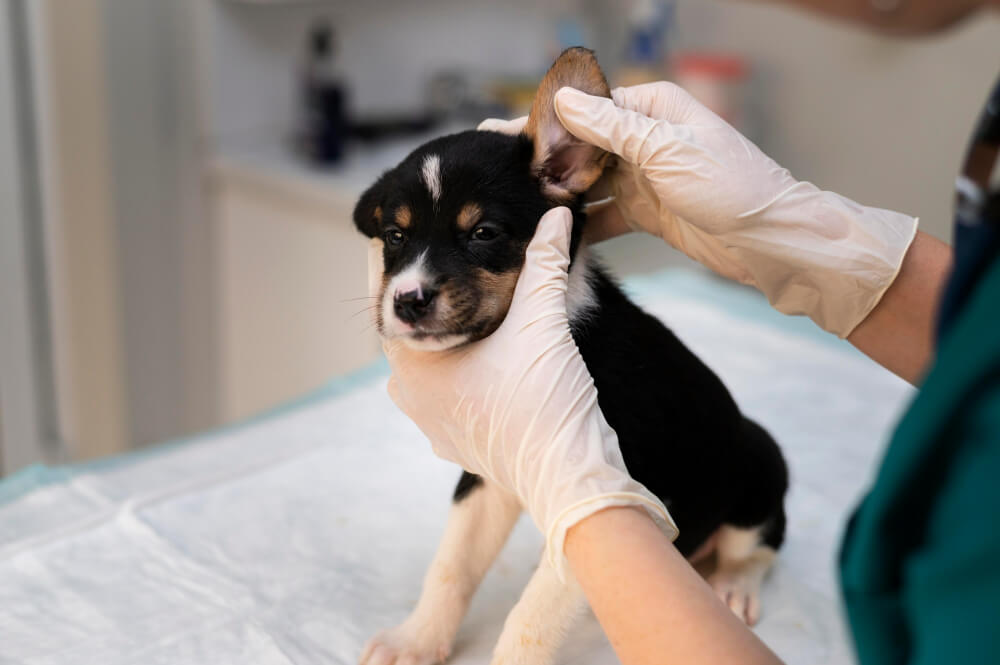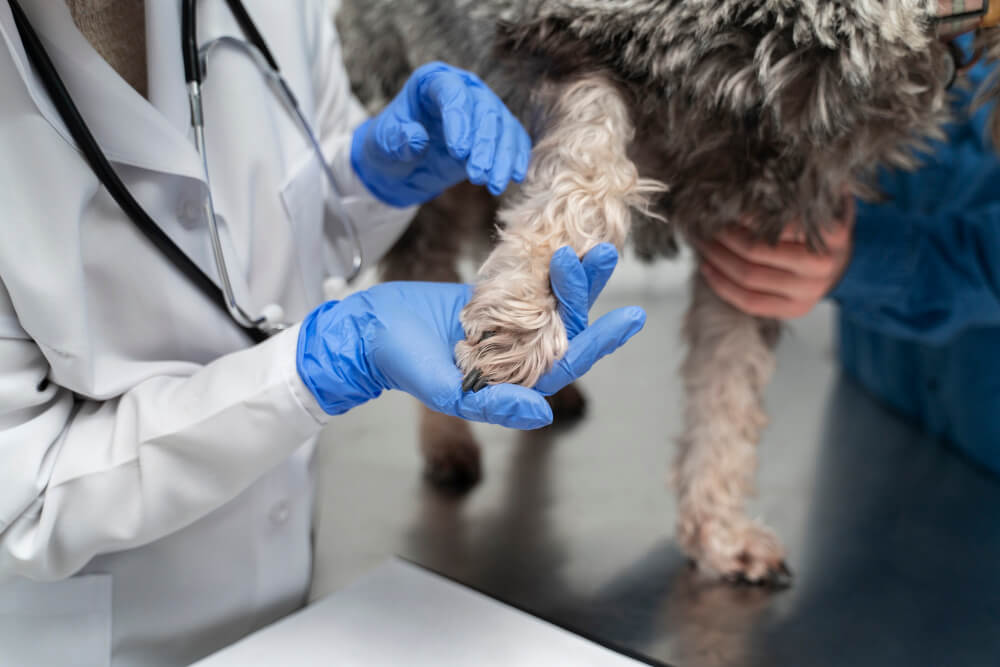Ehrlichiosis in dogs is a serious tick-borne disease that every pet owner should know about. This condition, caused by a type of bacteria transmitted through tick bites, can have mild to severe effects on your furry friend’s health. Understanding its symptoms, causes, and treatments is key to keeping your dog safe and healthy.
In this guide, we’ll cover everything about ehrlichiosis in a friendly, easy-to-read way, so you feel informed and prepared.

What Is Ehrlichiosis in Dogs?
Ehrlichiosis is a disease caused by bacteria from the genus Ehrlichia, which is transmitted to dogs through the bite of infected ticks. The most common culprit is the brown dog tick (Rhipicephalus sanguineus), but other ticks can also spread the disease.
This condition is widespread in areas with high tick populations and warm climates, but it can occur anywhere ticks are present.
What Causes Ehrlichiosis?
Ticks carry the Ehrlichia bacteria and pass it on to your dog when they feed on its blood. Once the bacteria enter your dog’s bloodstream, they invade white blood cells, leading to infection and a range of symptoms.
Common Types of Ehrlichia Affecting Dogs
- Ehrlichia canis: The most common strain, leading to canine monocytic ehrlichiosis (CME).
- Ehrlichia ewingii: Causes granulocytic ehrlichiosis.
- Ehrlichia chaffeensis: Less common, but can still infect dogs.
Symptoms of Ehrlichiosis in Dogs
Ehrlichiosis progresses in three stages, each with its own set of symptoms.
Acute Stage (1–3 Weeks Post-Infection)
This is the early stage when the bacteria begin multiplying in your dog’s body. Symptoms may include:
- Fever
- Lethargy
- Swollen lymph nodes
- Loss of appetite
- Weight loss
- Mild lameness or stiffness
- Bruising or small nosebleeds
Subclinical Stage (Weeks to Months Post-Infection)
In this stage, the disease often hides, showing little to no symptoms. However, the bacteria are still present in the body. Some dogs may remain asymptomatic, while others progress to the chronic stage.
Chronic Stage (Months to Years Post-Infection)
If left untreated, the disease becomes chronic, leading to more severe symptoms, including:
- Severe weight loss
- Anemia (pale gums)
- Nosebleeds or blood in the urine
- Swollen limbs or joints
- Neurological issues like seizures or unsteady movements
- Eye inflammation or vision problems

How Is Ehrlichiosis Diagnosed?
If your dog shows symptoms or has been exposed to ticks, your vet will perform tests to confirm ehrlichiosis.
Common Diagnostic Methods
- Blood Tests: Detect antibodies to Ehrlichia bacteria or abnormalities like low platelets.
- PCR Testing: Identifies the presence of Ehrlichia DNA in the blood.
- Complete Blood Count (CBC): Looks for signs of anemia or changes in white blood cells and platelets.
Early diagnosis is essential for effective treatment, so don’t delay a vet visit if you suspect ehrlichiosis.
How Is Ehrlichiosis Treated?
Treatment for ehrlichiosis is straightforward in most cases, especially when caught early.
Antibiotics
The go-to treatment is a course of antibiotics, typically doxycycline, administered for 3–4 weeks. Most dogs show improvement within 24–48 hours of starting treatment.
Supportive Care
In severe cases, additional care may be needed, such as:
- Blood transfusions for anemia
- Pain management for joint inflammation
- Fluid therapy for dehydration
Can Ehrlichiosis Be Prevented?
Prevention is always better than cure, especially for tick-borne diseases. Here’s how you can protect your dog from ehrlichiosis:
Tick Prevention
- Use veterinarian-approved tick preventatives, like collars, spot-on treatments, or oral medications.
- Regularly check your dog for ticks, especially after outdoor activities.
Yard Maintenance
- Keep your yard tidy by mowing the grass and clearing away debris, reducing tick habitats.
Avoid High-Tick Areas
- Be cautious in wooded areas, tall grass, or places known for tick infestations.
Routine Vet Visits
- Schedule regular checkups to monitor your dog’s overall health and catch any signs of tick-borne diseases early.
Is Ehrlichiosis Contagious to Humans or Other Pets?
Ehrlichiosis is not directly contagious between dogs or from dogs to humans. However, ticks carrying the Ehrlichia bacteria can bite humans and cause infection. Protecting your pets from ticks also reduces your risk of exposure.
When to See a Vet
If your dog shows any of the symptoms mentioned—especially after a known tick bite—it’s crucial to consult your vet. Early detection and treatment can prevent the disease from progressing to its chronic stage.
Final Thoughts
Ehrlichiosis in dogs is a serious but manageable condition when caught early. By staying vigilant, using tick preventatives, and seeking timely veterinary care, you can protect your furry friend from this tick-borne threat.
Remember, your dog’s health is in your hands, and a little prevention goes a long way in ensuring they lead a happy, tick-free life!







